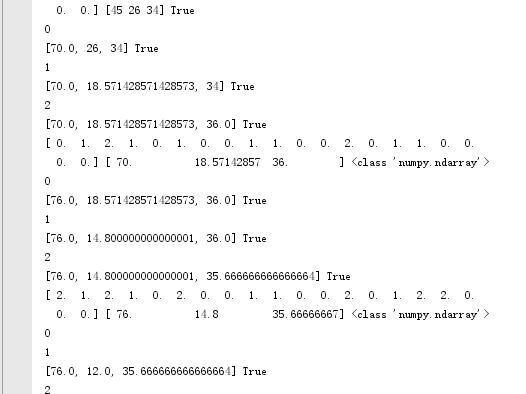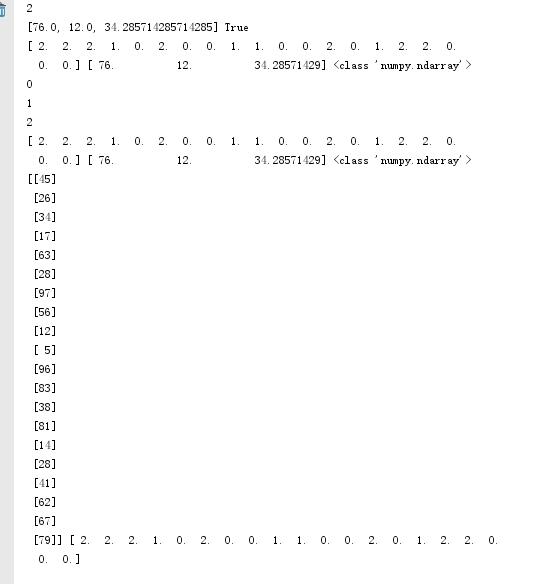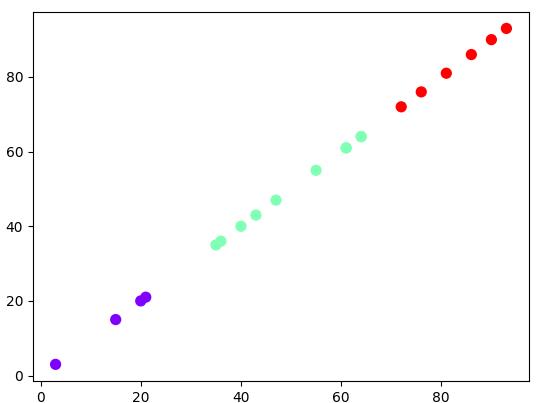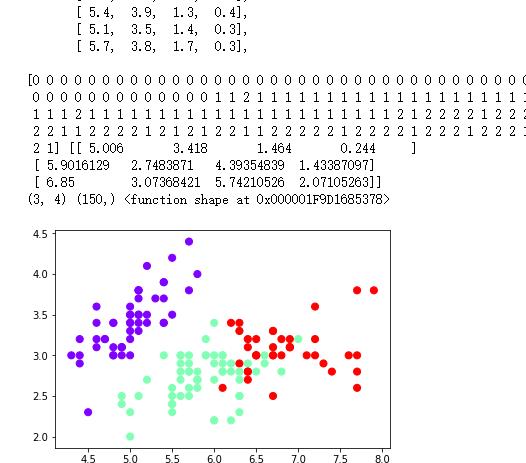import numpy as np
x = np.random.randint(1, 100, [20, 1])
y = np.zeros(20)
k = 3
# 选取数据空间中的K个对象作为初始中心,每个对象代表一个聚类中心;
def initcenter(x, k):
return x[0:k].reshape(k)
def nearest(kc, i):
a = (abs(kc - i))
b= np.where(a == np.min(a))
return b[0][0]
def xclassify(x, y, kc):
for i in range(x.shape[0]):
y[i] = nearest(kc, x[i])
return y
# 更新聚类中心:将每个类别中所有对象所对应的均值作为该类别的聚类中心,计算目标函数的值;
def kcmean(x, y, kc, k):
l = list(kc)
flag = False
for a in range(k):
print(a)
m = np.where(y == a)
n = np.mean(x[m])
if l[a] != n:
l[a] = n
flag = True
print(l, flag)
return (np.array(l), flag)
k = 3
kc = initcenter(x, k)
flag = True
print(x, y, kc, flag)
# 判断聚类中心和目标函数的值是否发生改变,若不变,则输出结果,若改变,则返回2
while flag:
y = xclassify(x, y, kc)
kc, flag = kcmean(x, y, kc, k)
print(y, kc, type(kc))
print(x, y)
import matplotlib.pyplot as plt
plt.scatter(x, x, c=y, s=50, cmap="rainbow");
plt.show()




#用sklearn.cluster.KMeans,鸢尾花花瓣长度数据做聚类并用散点图显示
import matplotlib.pyplot as plt
import numpy as np
from sklearn.datasets import load_iris
iris = load_iris()
a = iris.data
a
from sklearn.cluster import KMeans
est = KMeans(n_clusters = 3)
est.fit(a)
kc = est.cluster_centers_
y_kmeans = est.predict(a)
print(y_kmeans,kc)
print(kc.shape,y_kmeans.shape,np.shape)
plt.scatter(a[:,0],a[:,1],c=y_kmeans,s=50,cmap='rainbow');
plt.show()








